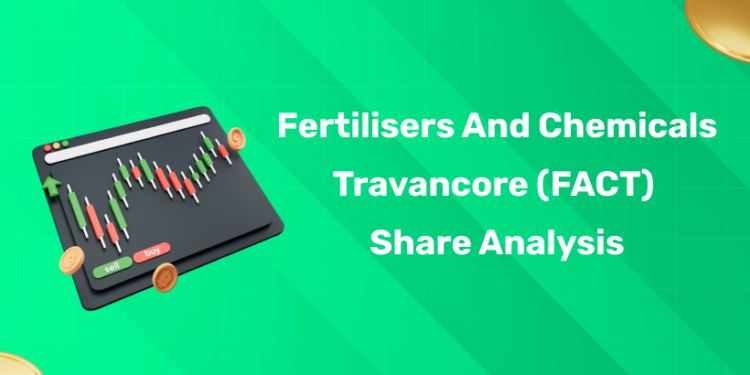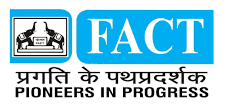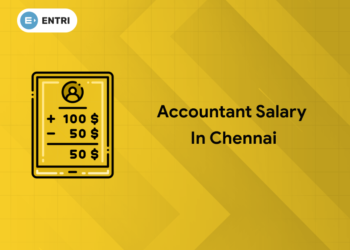Table of Contents
Company History
The Fertilisers and Chemicals Travancore Limited (FACT) was incorporated in 1943. Founded under the patronage of the Maharajah of Travancore, the organisation kickstarted its production in 1947. Fertilizer output (ammonium sulphate) was the first product to be rolled out from its Udyogamandal plant.
Earlier, in private hands (Seshasayee Brothers), FACT was nationalized in 1960. Later, from 1962 onwards, the Government of India took a major shareholding in the company. FACT stands out from the rest as it holds the distinction of being one of the earliest fertilizer manufacturing entities in independent India. To add on, it is also one of the major public sector undertakings in Kerala.
Thus, for new investors, FACT boasts of a legacy heritage along with public sector backing, which may offer both advantages as well as disadvantages.
Start investing like a pro. Enroll in our Stock Market course!
Business Model & Leadership
1: What is a stock?
Business Model
FACT operates through two primary segments:
- Fertilizer division: Manufacturing and sale of fertilizers and some of them are ammonium phosphate, ammonium sulphate, NPK mixtures, etc.
- Petrochemical / chemical division: Production and trade of chemicals such as Caprolactam, sulfuric acid, and related by-products.
Apart from the above mentioned segments, FACT engages in activities ranging from engineering consultancy, design, fabrication and erection of industrial equipment as a support or auxiliary business vertical.
Revenue is a blend of fertilizer volumes (linked to agricultural demand, government subsidy cycles) and chemical/industrial cycles. The profit margins are often sensitive to input costs such as natural gas, feedstock, energy and regulatory or subsidy regimes.
Leadership
- FACT is under majority ownership of the Government of India (90%). The administrative control of the company is with the Ministry of Chemicals & Fertilizers.
- Kishor Rungta is the Chairperson & Managing Director: (as key leadership figure)
- Since it is a public sector enterprise, leadership transitions and strategic decisions are often influenced by factors such as government policy, regulatory shifts, and oversight.
Since FACT belongs to the public sector, the company leadership’s ability to respond flexibly to market changes can be limited. However, the backing may provide stability and access to government support schemes.
Milestones & Achievements
Here are key milestones and achievements of FACT (in bullet form):
- First fertilizer production in Kerala (1947)
- Transition from private to public sector in 1960–62, bringing government backing
- Expansion of chemical and petrochemical production units alongside fertilizer business
- Diversification into industrial equipment fabrication and consultancy
- Maintaining operations through various agricultural subsidy cycles and regulatory changes
- Periodic modernization and capacity add-ons to handle more advanced fertilizer mixes
- Recognized as a legacy PSU in the southern region, with institutional reputation in the fertilizer industry
These milestones stand as an evidence of the gradual evolution of FACT from a pure fertilizer maker to a more diversified chemical & industrial solutions provider.
Fundamentals, Share Price & Key Financial Metrics
Fundamental Strengths & Challenges (Snapshots)
- In the financial year 2024, FACT reported a revenue of ₹ 40,510 million, down from ₹ 50,550 million (a decline of 19.8 %). There was also a sharp drop in earnings.
- The company has at times shown very high valuation multiples: P/E is extremely elevated in some analyses, raising overvaluation concerns.
- According to one report, FACT’s P/B value was around 42.3×, indicating the share is trading at a large premium to book value.
- Profitability metrics show varied trends: net profit margin has ranged, and return on equity (ROE) and return on capital employed (ROCE) show significant volatility.
- Some sources show that the debt to equity ratio was extremely high (e.g. 144.57) in certain periods, making the company relatively leveraged for its scale.
- In 2025, the Market Cap stood at ₹ 57,735 crore, P/B 41.98, ROE 3.01 %, ROCE 19.24 %.
In short, the fundamentals portray a picture of a company with heavy valuations, volatile margins, and sensitivity to cost & leverage.
Share Price & Market Data
Here is a table summarizing pertinent share-price and market indicators:
| Metric | Value / Range |
| Latest Share Price (NSE FACT) | ₹ 892 – ₹ 900 |
| 52-Week Range | ₹ 565 – ₹ 1,187 |
| P/E Ratio | Extremely high / undefined in some periods |
| P/B Ratio | 42× (very elevated) |
| ROE | 3.01 % (2025 values) |
| ROCE | 19.24 % (2025 values) |
| Net Profit Margin | Variable, e.g. 1.01 % to 10+ % in different years |
Key Financial Ratios (recent trends)
From Moneycontrol’s ratios section:
| Ratio Type | Recent Values / Notes |
| Net Profit Margin (%) | 1.01 %, 2.89 %, 9.88 %, 7.98 %, 10.80 % in different years |
| Return on Net Worth (Equity %) | 3.00 %, 10.62 %, 48.11 %, 186.55 %, etc (high volatility) |
| Return on Capital Employed (ROCE) | 17.65 %, 33.93 %, 56.95 %, 155.53 %, 915.09 % in certain periods |
These ratios suggest the company’s performance can swing dramatically (due to leverage, one-off gains or losses, and cost swings).
Share Price Technical / Trend Observations
- Technical analysis often shows a “Strong Sell” signal on daily charts, per certain technical platforms.
- In some timeframes, the technical ratings flip between neutral, buy, or sell depending on short/mid-term momentum.
- The 200-day moving average crossover signals have led to average declines ( –5 %) within 30 days historically in similar past crossovers.
- Some platforms show a “Buy” rating for short periods (1 week) though longer perspectives may advise caution.
Stock Market Training Reviewed & Monitored by SEBI Registered RA
Trusted, concepts to help you grow with confidence. Enroll now and learn to start investing the right way.
Know moreGrowth Prospects & Risks
Growth Drivers & Opportunities
Agricultural Demand & Policy Support
Since trends such as farming intensity, irrigated acreage, and crop diversity have increased in India, fertilizer consumption continues to be dependent on these trends. Government fertilizer subsidies or support programs can make a major influence on demand.
Chemical / Specialty Products
If FACT produces value-added chemicals such as caprolactam and leverages by-product streams, the organisation’s chemical / petrochemical side can capture higher margins.
Modernization & Efficiency Gains
Upgrades to plant operations, energy efficiency, process optimization, and cost control are some measures that could help margins recover during favorable commodity cycles.
Synergies & Integration
Vertical integration measures such as securing feedstock, co-generation and backward linkages may help reduce input cost exposure.
Regulatory / Public Sector Projects
Because FACT is a PSU, it may benefit from government contracts, public sector programs, or strategic support tools during stress periods.
Risks & Headwinds
- Valuation Overhang: The extremely high P/B multiples is an indication that much of the expected upside may already be priced in.
- Cost Volatility: Changes in energy, gas, and costs of raw material costs, such as sulfur and ammonia feedstocks, can lead to a sharp erosion of margins.
- Leverage & Debt Risk: High debt levels magnify downside in weak cycles.
- Regulatory / Policy Shifts: Changes in subsidy, environmental norms, or import/export regulations can have outsized impacts.
- Operational Disruptions: Plant downtime, maintenance, or process hazards in fertilizer/chemical production can be material.
- Competition & Substitute Risk: Other fertilizer firms, imports, or alternative chemical technologies could make a dent in margins.
- Public Sector Constraints: Bureaucratic delays, governance constraints, or less nimble decision making may adversely affect agility.
Given these, while growth is possible in favorable cycles, downside risks are substantial.
Final Recommendation & Key Takeaways
Recommendation (for new investors):
- Taking its public sector heritage, volatile fundamentals, and rich valuations into consideration, FACT is best suited for experienced, high-risk tolerant investors rather than new investors.
- If you are planning to enter, a modest allocation (e.g. 5–10 % of your equity exposure) could allow participation in upside while limiting downside.
- Keep a track of valuations (P/B, P/E), margin trends, debt levels, and macro fertilizer policy shifts.
- Consider the stock for holding for the medium to long term through cycles, but not short-term trading, unless you have strong technical / fundamental insight.
- Use stop losses or risk limits as the stock has a tendency for swings.
Key Takeaways:
- FACT’s share carries both legacy strength (PSU backing, industry presence) and high valuation risk.
- Its fundamentals are volatile, with margins and returns fluctuating considerably year to year.
- The valuations suggest market expectations are aggressive, downside risk if growth or margins disappoint.
- Growth prospects exist via modernization, higher-value chemical products, and supportive agricultural demand.
- But risks from input cost swings, leverage, and regulatory changes are significant.
- New investors should approach FACT share analysis with caution, using conservative sizing and monitoring key financial metrics closely.
Stock Market Training Reviewed & Monitored by SEBI Registered RA
Trusted, concepts to help you grow with confidence. Enroll now and learn to start investing the right way.
Know moreFrequently Asked Questions
What is the current share price of FACT?
The FACT share currently trades in the range of ₹ 892 – ₹ 900 (NSE/market data approximations).
Is FACT overvalued or undervalued?
Many analysts view it as overvalued given very high P/B and extreme multiples relative to book and earnings.
What are the major business segments of FACT?
The two main segments are fertilizers and petrochemical / chemicals, plus auxiliary engineering and fabrication business.
What major risks should I watch when investing in FACT?
Risks include input cost volatility, high leverage, regulatory changes, plant disruptions, and valuation corrections.
Can FACT give dividends / yield to investors?
Dividend yields have been minimal, and expectations should be conservative due to reinvestment priorities and public sector policy constraints.
How is FACT’s valuation when compared to its peers?
FACT’s valuation metrics (P/B, P/E) are extremely rich compared to industry peers, indicating an aggressive market valuation.
Is FACT suitable for new investors?
Not ideally. Given its complexity, volatility, and valuation risk, new investors would be better off with more stable, lower-volatility stocks.















